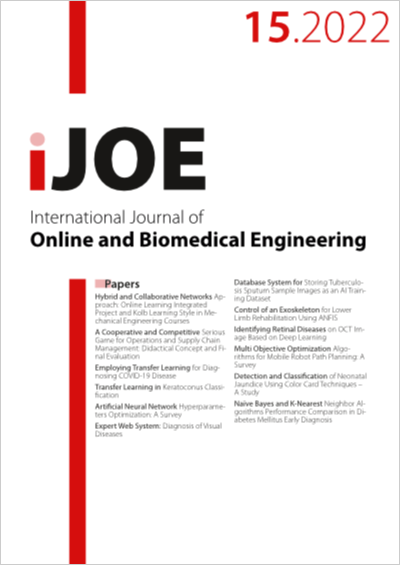Transfer Learning in Keratoconus Classification
DOI:
https://doi.org/10.3991/ijoe.v18i15.33689Keywords:
Keratoconus classification, Machine learning, Deep learning, Transfer learning, Corneal topographyAbstract
Early detection of keratoconus will provide more treatment choices, avoid heavy treatments, and help stop the rapid progression of the disease. Unlike traditional methods of keratoconus classification, this study presents a machine learning-based keratoconus classification approach, using transfer learning, applied on corneal topographic images. Classification is performed considering the three corneal classes already cited : normal, suspicious and keratoconus. Keratoconus classification is carried out using six pretrained convolutional neural networks (CNN) VGG16, InceptionV3, MobileNet, DenseNet201, Xception and EfficientNetB0. Each of these different classifiers is trained individually on five different datasets, generated from an original dataset of 2924 corneal topographic images. Original corneal topographic images have been subjected to a special preprocessing before their use by different models in the learning phase. Images of corneal maps are separated in five different datasets while removing noise and textual annotation from images. Most of models used in the classification allow good discrimination between normal cornea, suspicious and keratoconus one. Obtained results reached classification accuracy of 99.31% and 98.51% by DenseNet201 and VGG16 respectively. Obtained results indicate that transfer learning technique could well improve performance of keratoconus classification systems.
Downloads
Published
How to Cite
Issue
Section
License
Copyright (c) 2022 Mustapha AATILA, Mohamed LACHGAR, Hamid HRIMECH, Ali KARTIT

This work is licensed under a Creative Commons Attribution 4.0 International License.



